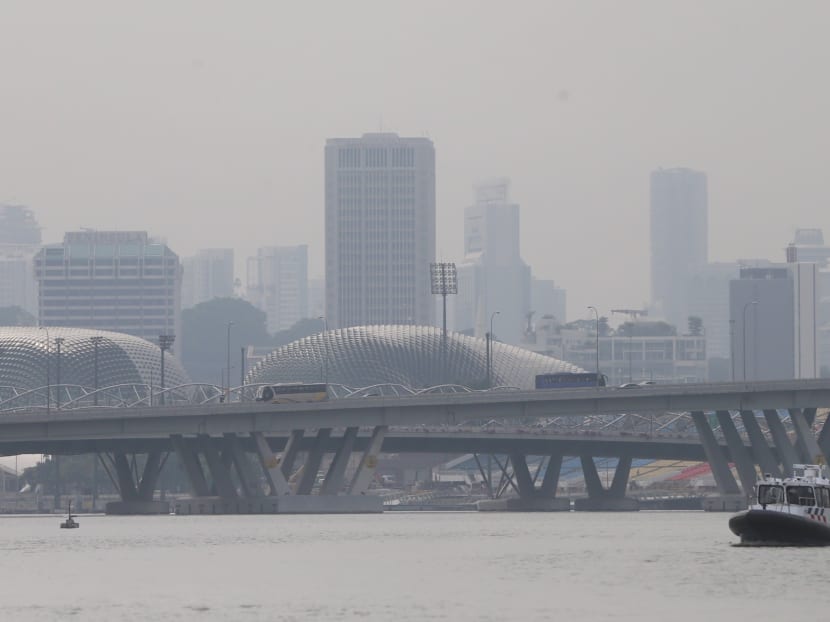More than 9 in 10 people breathe bad air, WHO study says
HONG KONG — The World Health Organisation said on Tuesday (Sept 27) that 92 per cent of people breathe what it classifies as unhealthy air, in another sign that atmospheric pollution is a significant threat to global public health.

Haze seen from Marina Bay on Sep 27, 2016. Photo: Ooi Boon Keong
HONG KONG — The World Health Organisation said on Tuesday (Sept 27) that 92 per cent of people breathe what it classifies as unhealthy air, in another sign that atmospheric pollution is a significant threat to global public health.
A new report, the WHO’s most comprehensive analysis so far of outdoor air quality worldwide, also said that about three million deaths a year — mostly from cardiovascular, pulmonary and other noncommunicable diseases — were linked to outdoor air pollution. Nearly two-thirds of those deaths are in South-east Asia and the Western Pacific region, compared with 333,000 in Europe and the Americas, the report said.
“When you look out through the windows in your house or apartment, you don’t see the tiny little particles that are suspended in the air, so the usual perception is that the air is clean,” Mr Rajasekhar Balasubramanian, an air quality expert at the National University of Singapore who was not involved in the study, said in a telephone interview on Tuesday.
“But the WHO report is a clear indication that even in the absence of air pollution episodes, the concentrations of particles suspended in the air do exceed what’s considered to be acceptable from a health viewpoint,” he said.
In previous studies, the WHO estimated that more than 8 in 10 people in urban areas that monitored air pollution were breathing unhealthy air and that about seven million deaths a year were linked to indoor and outdoor pollution.
The new study reduced the second estimate to 6.5 million deaths. But Ms Mara P Neira, director of the WHO’s Department of Public Health and Environment, said in a telephone interview that “the trends are still going in the wrong direction”.
The WHO study was conducted by dozens of scientists over an 18-month period and was based on data collected from satellites, air-transport models and ground monitors in more than 3,000 urban and rural locations, agency officials said on Tuesday.
The agency defined unhealthy air as having concentrations of fine particulate matter, known as PM 2.5, above 10 micrograms per cubic metre, but it did not measure concentrations of ozone, nitrous oxide or other harmful pollutants. NEW YORK TIMES





